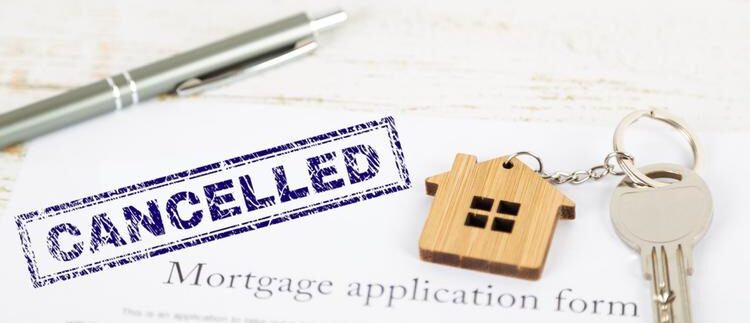The Ultimate Guide to Removing a Mortgage on Your Property: Say Goodbye to Financial Obstacles!

Are you feeling trapped by a mortgage on your property? Don’t worry, you’re not alone! Mortgages can be daunting, but they’re not insurmountable. With the right knowledge and actions, you can break free from the shackles of a mortgage and regain control of your property. In this comprehensive guide, we’ll walk you through the necessary steps, timeframes, and costs involved in removing a mortgage. Get ready to embark on a journey towards financial freedom!
◼ Who can request mortgage cancellation?
A mortgage can be canceled under certain circumstances and for various reasons. For example, mortgage cancellation occurs when the debtor has fully paid off the debt, such as in the case of a loan from a bank, but not limited to that. It all depends on the type of mortgage in place.
◼ Judicial mortgage cancellation
A judicial mortgage is established through a court order that compels the debtor to satisfy the debt. The creditor can request it through the court, and it applies only to assets registered in the land registry.
In the presence of a mortgage, the sale of the property is hindered. To extinguish it, it is necessary to pay off the debt and request cancellation from the competent offices through a public deed prepared by a notary or a private document. This way, it will be possible to proceed with the sale of the property. Cancellation can be requested under certain circumstances, such as debt repayment, forced sale of the asset, creditor’s renouncement to their credit, or declaration of the property’s loss.
◼ Voluntary mortgage cancellation
A voluntary mortgage can be established through a contract or a specific declaration. The removal of a voluntary mortgage can occur in three different ways. Firstly, the credit institution can send a communication to the relevant offices for automatic cancellation, without the need to involve a notary.
Alternatively, cancellation can occur through a unilateral notarial deed, which ensures immediate and automatic cancellation and is subsequently transmitted to the Revenue Agency.
Finally, another option is the issuance of a court order.
◼ Legal mortgage cancellation
The legal mortgage represents a guarantee for the seller of a real estate unit and has implications for the buyer. The removal of a legal mortgage occurs through a specific notarial deed, and in case of litigation, cancellation is decided by the judge, who determines the costs involved.
◼ Mortgage cancellation on a property: how does it work?
To proceed with the cancellation of a mortgage, it is necessary to obtain a specific document with the consent of the creditor, which guarantees the public removal of the mortgage.
In the case where a mortgage loan has been correctly paid off, this step is not necessary, as the mortgage is automatically canceled upon the full repayment of the debt. In this case, the bank will issue a document of debt cancellation to the individual within 30 days.
However, there may be a situation where the mortgage is not canceled despite the debt being settled, due to other valid reasons. In this scenario, it is necessary to proceed with a formal request for mortgage cancellation to ensure the removal of the lien.
Where to go to cancel a mortgage? Who to contact?
To obtain mortgage cancellation, the intervention of the Registrar of the Land Registry Office where the property is located is required. Such cancellation can only take place upon presentation of a document containing the creditor’s consent, expressed in the form of a public deed or an authenticated private document, or in the form of a court judgment or another judicial order.
To ensure the proper execution of these highly technical procedures, it is advisable to consult a professional in the field, such as a lawyer or a notary.
◼ How long does it take to remove a mortgage on a house?
The time required for mortgage cancellation varies depending on the type of mortgage. For voluntary and legal mortgages, the timing depends on the creditor’s cooperation in providing consent for cancellation, which usually occurs within 30 days.
Credit institutions can use a simplified procedure that further shortens the time by directly communicating with the competent offices. Judicial mortgages, on the other hand, require longer processing times as it is necessary to await judicial orders.
◼ Simplified mortgage cancellation: when is it possible?
Simplified mortgage cancellation is a procedure exclusively provided for the cancellation of voluntary mortgages on a property, which occurs automatically and quickly.
This procedure applies to mortgages registered as collateral for loans and financing, including non-land loans, granted by entities engaged in banking and financial activities, and compulsory pension institutions for their employees and members.
It is activated when the debtor has fully extinguished the debt with the credit institution, and the bank has transmitted notice of loan cancellation to the Registrar’s Office, indicating that the voluntary mortgage can be canceled. In such a case, cancellation occurs without the need for any additional formalities or the intervention of a notary, and therefore, without any cost to the debtor.
◼ How much does it cost to remove a mortgage on a property?
Depending on the type of mortgage, which as we have seen can be legal, judicial, or voluntary, there may be costs associated with mortgage cancellation.
In the case of a simplified procedure and correct debt settlement, cancellation is usually free of charge. However, legal and judicial mortgages involve expenses, including a €59 stamp duty, mortgage tax of 0.5% of the mortgage amount with a minimum of €200, and a €35 mortgage fee.


